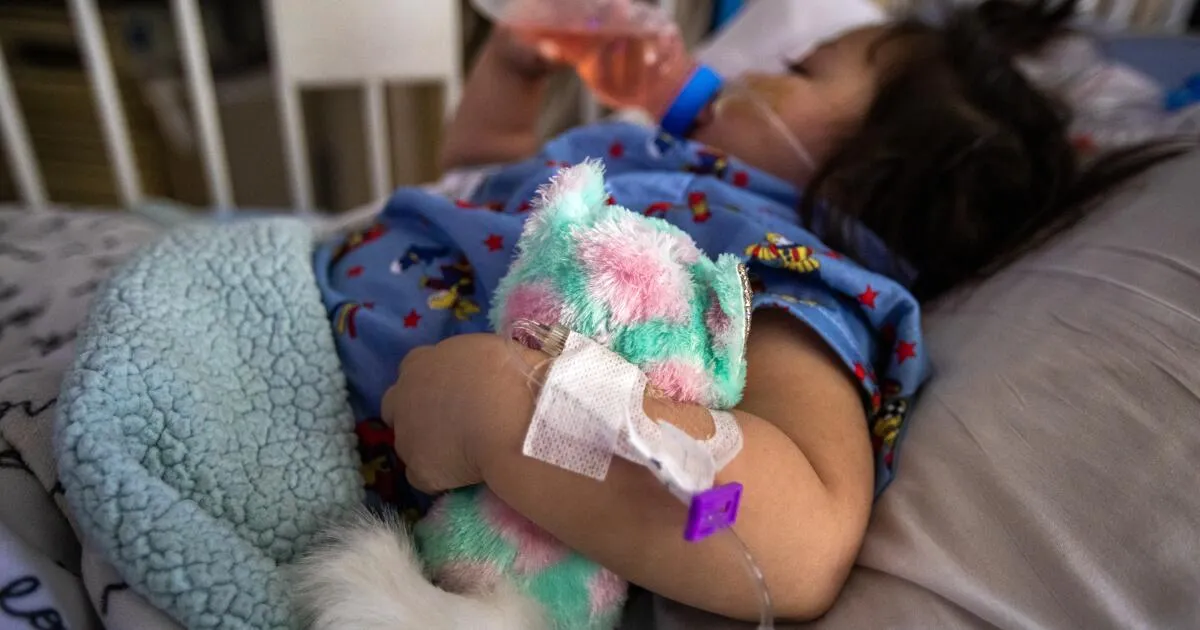
A significant wave of the highly contagious respiratory syncytial virus (RSV) is currently impacting the United States, leading to an alarming increase in hospitalizations among infants and toddlers. Recent data highlights that as we enter the fall and winter respiratory virus season, which is also characterized by heightened activity of other viruses like COVID-19 and the flu, RSV has emerged as the leading cause of hospitalization for infants nationwide.
Health experts are urging pregnant women to get vaccinated against RSV close to their delivery dates or to ensure their newborns receive the necessary immunizations. The Los Angeles County Department of Public Health emphasized, “This is the perfect time to get your vaccine for RSV if you have never gotten one.” RSV spreads easily through coughs and sneezes, but can also be transmitted via contaminated surfaces, such as door handles. It is crucial to wash hands frequently to prevent infection.
According to data from PopHIVE, a project led by the Yale School of Public Health, approximately 1.2% of emergency room visits for infants under one year old were attributed to RSV in the week ending October 11, which is a notable increase from 0.4% just a month earlier. Epidemiologists Katelyn Jetelina and Hannah Totte noted in their blog, Your Local Epidemiologist, that “an RSV wave is starting to take hold.” The U.S. Centers for Disease Control and Prevention (CDC) warns that RSV can be particularly dangerous for infants, older adults, and individuals with specific medical conditions.
RSV can lead to severe respiratory conditions, including pneumonia and bronchiolitis, which is an inflammation of the lungs' small airways. The California Department of Public Health states that annually, about 2% to 3% of young infants are hospitalized for RSV. Alarmingly, many children who require hospitalization for RSV were previously healthy. The CDC reports that these children may need oxygen, intravenous fluids, or even ventilators to assist with breathing. Unlike treatments available for the flu and COVID-19, there are no antiviral medications for RSV once an infection occurs.
As of now, the combined respiratory illness activity from RSV, flu, and COVID-19 in California is rated as “very low.” However, health officials, including those from the L.A. County Department of Public Health, have indicated that we are beginning to see the onset of the respiratory virus season. In Northern California, health officials in Santa Clara County report “medium” levels of RSV detected in the wastewater of cities such as San José, Palo Alto, and Sunnyvale.
Vaccination is particularly crucial now, especially as respiratory virus activity is expected to increase. Dr. Regina Chinsio-Kwong, the Orange County health officer, recommends that pregnant women get vaccinated between 32 and 36 weeks of gestational age — approximately one to two months before their due date. Immunizations are also advised for individuals aged 75 and older, and for those aged 50 to 74 with underlying health conditions like diabetes, cancer, kidney disease, asthma, or heart disease. Furthermore, vaccinations are recommended for residents of nursing homes or long-term care facilities.
New RSV vaccinations were introduced this year, with three brands available: Moderna’s mResvia, Pfizer’s Abrysvo, and GSK’s Arexvy. While all three vaccines are suitable for older adults, only the Pfizer vaccine is approved for use in pregnant women. Additionally, infants can receive immunizations starting this year through monoclonal antibodies, which serve a similar purpose to vaccines. Generally, older adults who have already received an RSV vaccination do not need another.
The introduction of these vaccines follows a particularly severe respiratory virus season in 2022-2023 when California faced a “tripledemic” of RSV, flu, and COVID-19, overwhelming hospitals. Unlike RSV shots, vaccinations for the flu and COVID-19 are generally recommended each fall and winter season. The California Department of Public Health advises that older adults, particularly those aged 65 and older, can receive the COVID-19 vaccination every six months.
Patients can receive RSV, flu, and COVID-19 vaccinations during the same visit to their healthcare provider. Dr. Chinsio-Kwong emphasizes that “receiving all eligible vaccines at once is considered best practice,” as it helps to avoid missed opportunities due to scheduling conflicts. The California Department of Public Health recommends annual flu vaccines for everyone aged six months and older, while COVID-19 vaccinations are encouraged for anyone who desires them.
Amid previous concerns about the availability of COVID vaccinations, California health officials now report that obtaining these shots is relatively straightforward. Earlier this season, confusion arose from conflicting guidance from health agencies, including the FDA and CDC, which complicated vaccination efforts. However, as of October 6, acting CDC Director Jim O’Neill has lifted previous restrictions, allowing individuals under 65 to make personal decisions about receiving the updated COVID-19 vaccine in consultation with health professionals.
California has also clarified state laws, ensuring that pharmacists can independently administer the COVID-19 vaccination, facilitating easier access for patients. This ensures that community members can receive the necessary vaccinations to protect themselves as respiratory virus activity increases.